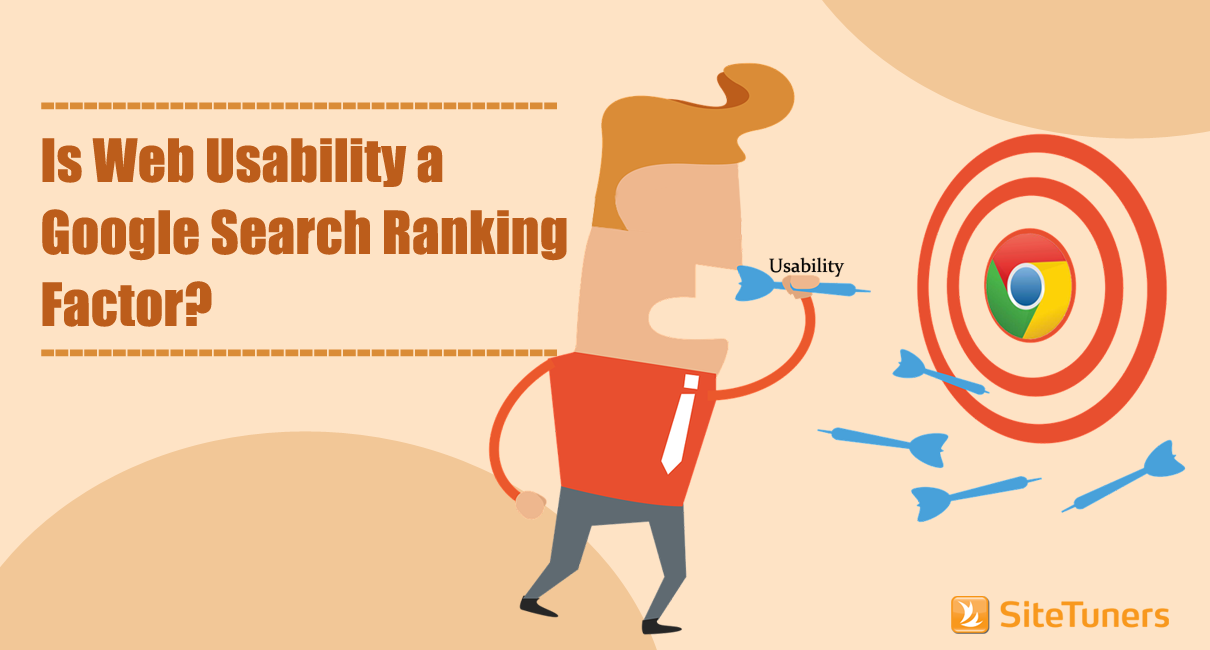Most online marketers have too much going on – attempting to keep pay-per-click campaigns profitable, trying to create content that aids Search Engine Optimization (SEO), tweaking the web site to present information better, improve the User Experience (UX) and lower the bounce rate, managing mobile variations or Responsive Web Design (RWD) projects, running split and multivariate tests to improve conversion rates – the list can be daunting.
What typically happens is, tasks that benefit a single area become backburner projects, often never again seeing the light of day. That is, if a project affects both Search Engine Marketing (SEM) and Conversion Rate Optimization, (CRO) the project pushes through. The RWD tweak to the microsite, though – maybe that’s a project for next year. And on and on. That’s a reality of online marketing – there’s always more that you need to do, but you need to focus on a few things that move the needle in multiple areas.
So it pays to ask: Is web usability a ranking factor on Google? That is, are you hitting two birds with one stone when you tackle web usability projects, because you also affect your organic rankings as a happy side-effect?
Let’s examine 3 areas where that’s the case.
1. Pogo-Sticking … Back to the Search Page
Pogo-sticking, if you’re not familiar with how it applies to web sites, is essentially bouncing back and forth between pages to find what you need.
Applied to search pages, they can be deadly for your search ranking.
So, let’s say you’re looking for door knobs in Illinois, and you click on the first result of your search, The Knobbery. Only, instead of deep-linking you into the relevant page, they take you to the home page, where you find the navigation unclear. By clicking on “Back,” you are “pogo-sticking” back to the search page … and Google sees that.
Google hates that behavior.
What Google sees as good behavior is when a user gets taken to a result, the query gets satisfied by the result, and the user does not head back to the search engine results page for another try. As more and more visitors click the back button, Google learns that the page is a bad result for the query, and the rankings take a dive. You can visit Moz’s Whiteboard Friday to learn more.
In this particular case, web usability influences search rankings. While good usability – hitting a user need spot on – does not directly provide a ranking boost, and isn’t directly a search signal, it does ensure that you don’t take a ranking drop for bounces.
That’s usually a win for SEO, UX, and CRO – when you have projects that hit all three, it’s usually something you need to prioritize.
2. Google Panda … And the Content Quality Campaign
Slightly related to the concept of pogo-sticking is Google’s tweak to the algorithm, Panda.
For those of you who are not familiar with Panda, it’s Google’s attempt to match what users perceive as “quality content.”
The most comprehensive coverage is probably from SEL’s Panda page, but the gist is that Google compares pages that their algorithms rank higher with what human quality raters perceive as good content. While the human raters don’t directly impact the rankings, they provide Google engineers benchmarks, so the engineers know when algorithm tweaks hit the sweet spot and rank good content higher on the search results page.
The algorithm hit sites like Mahalo and About.com hard … and rightly so. Aggregate sites and content farms were the sites hit hardest, and those were really sites that didn’t do much for web usability – they were just designed to rank for keywords, and that’s a business model that you don’t see as much of anymore, post-Panda.
Again, this is not exactly web usability as a ranking factor, per se. Still, Panda ensures that creating content to be the best possible answer for a user’s question is good for both UX and SEO.
3. Mobile-Friendly Update … And the Usability Impact
About as close as you can get to Google using web usability as a ranking factor is on mobile. In April, Google flipped the switch for the mobile-friendly update. That judges – as well as Google spiders can “judge,” anyway – how usable your web site is when viewed on mobile devices.
On smart phones, it’s an active ranking factor. Unlike with pogo-sticking concerns and Panda, this is an actual attempt by the search engine to incorporate usability into an active search ranking factor.
So … Is Usability a Search Ranking Factor or Not?
The short answer is … not exactly.
Some of the things that Google wants from web sites for search can be anti-usability. You can read our post on usability and search being frenemies to see where most of the friction lies.
But Google’s getting there.
The most disastrous things for usability that Google used to like, such as repetitions of a target search term, are now actually penalized by the search engine. Meanwhile, Google’s punishing sites with a high rate of pogo-sticking, and sites that are just built to rank rather than answer user questions in the best possible way.
So no, UX is not a ranking factor, at least not the way an H1 match is a ranking factor.
But the rift between SEO and UX is getting smaller, while the intersection of good UX and good SEO is getting larger. Soon, the difference will be small enough not to matter for most marketers. By then, going for good UX will probably mean going for good search rankings.



